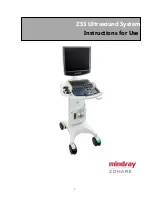
15
Channel Controls
The 10 vertical channel strips look very
similar, with only a few differences between
them. Each channel works independently,
and controls the signals plugged into the
inputs directly below it.
Mono Channels 1 to 6
• Channels 1 to 6 are mono channels,
and their controls affect both the mono
mic input (5) and the mono line-level
input (6).
• The 3-band EQ (14-16) has shelving-high,
shelving-low, and peaking-mid EQ.
• The mono signals are split equally to the
left and right of the main mix.
• The gain switch (21) allows you to select
between high gain for microphone level
inputs, or low gain for line-level inputs or
strong mic signals.
Stereo Channels 7 to 10
• Channels 7 and 8 are stereo channels,
and their controls affect both the mono
mic input (5), and stereo line-level input
(7). (The mono mic input of each stereo
channel is split equally to left and right).
• Channels 9 and 10 are stereo channels,
and their controls affect both the mono
mic input (5), and stereo RCA inputs
(8). (The mono mic input of each stereo
channel is split equally to left and right).
• The stereo channel EQ (14-16) is a 3-
band design just like the mono channel
EQ.
• The channel gain is fi xed.
“U” like Unity gain
The “U” symbol on almost every level
control stands for “unity gain,” meaning no
change in signal level. The labels on the
controls are measured in decibels (dB), so
you’ll know what you’re doing level-wise if
you choose to change a control setting.
Signal Flow
The block diagram on page 26 shows the
signal fl ow, but here is a short description of
the fl ow through the channel strip section:
1. The mic inputs and mono line inputs
of mono channels 1 to 6, each feed a
preamplifi er whose gain is set by the
gain switch (21). The stereo channel
inputs (mic, 1/4” and RCA) do not have
a gain switch.
2. The EQ section (14-16) is available
to adjust the signal as required, with
adjustments in the low, mid, and high
frequency range.
3. The mon control [17] taps the signal off
just before the channel level controls, so
the stage monitor level is not affected
by changing the channel levels. (It is
affected by channel EQ.)
4. The channel level controls (20) allow
you to adjust how much of each
channel is added to the main mix.
5. The FX control [18] taps the signal after
the channel level, so any change in
channel level will affect the signal
reaching the internal effects processor.
14
15
16
17
18
20
6
19
21
5
7
8
Mono Channels 1–6
Stereo Channels 7–10














































